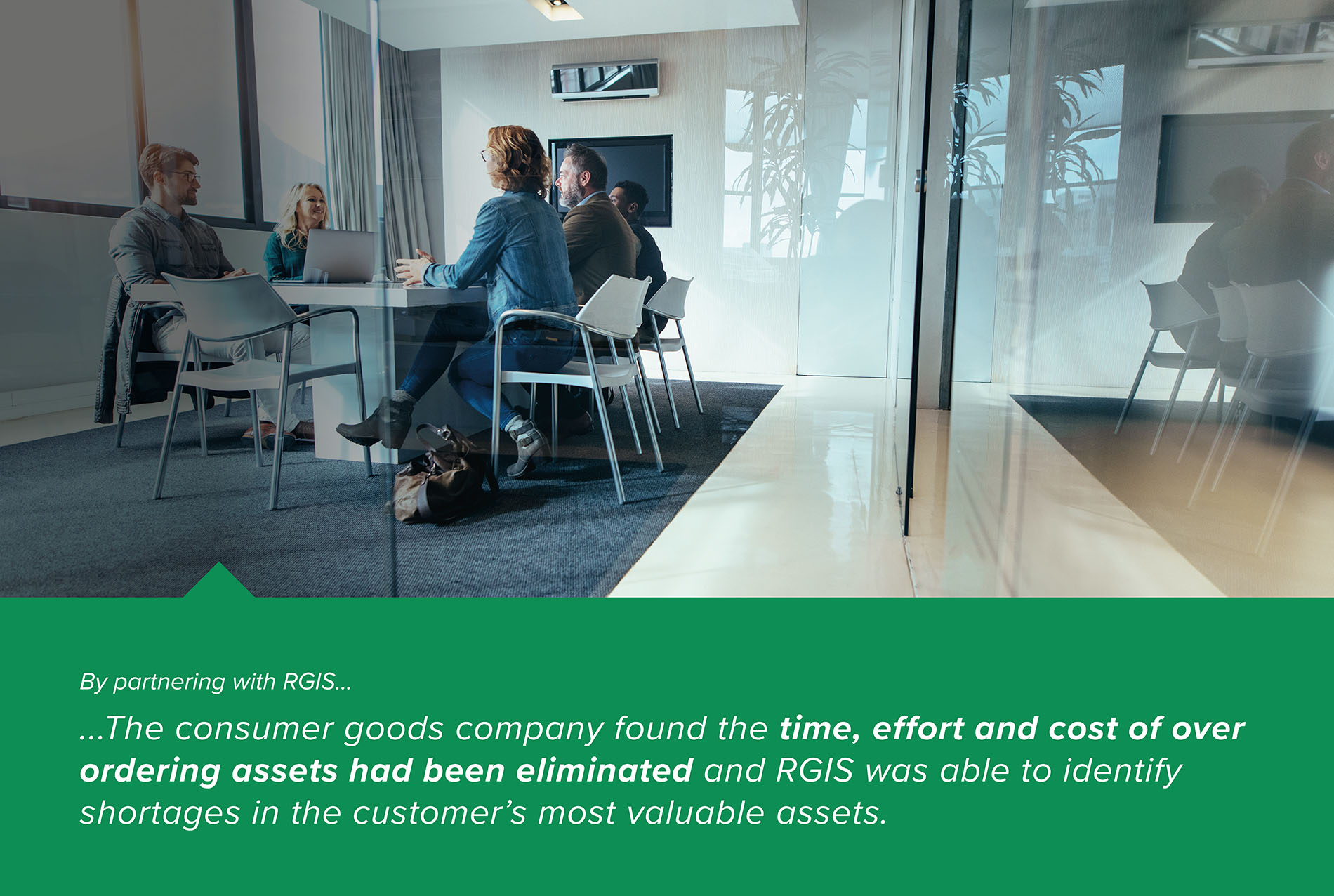Fixed Asset Count in Offices and Production Facility

A consumer goods company operating in around 60 countries, well known for its health, hygiene and home products, needed to understand which assets were within the office buildings and also within the production facility.
REQUIREMENT
The consumer goods company partnered with RGIS to understand what assets the customer had in each office building. Also each building within the production facility, to enable the company to update the asset register. The customer required the following:
- Accurate asset audit conducted in a professional way
- Audit to cover two office buildings, and the main production buildings. This included over a dozen of laboratories, warehouses and offices within the production facility
- To have all assets counted and tagged with a unique identifier
- Identify the location of assets
- To understand shortages and surplus assets the customer had
SOLUTION
RGIS worked with the consumer goods company to complete a full asset count.
- Two skilled RGIS teams consisting of two auditors collected data on every fixed asset within the office buildings. Four skilled RGIS teams of two auditors performed the asset count within the production facilities
- RGIS implemented temporary barcode labels for the assets that were not tagged
- Data collected consisted of inventory numbers, models, producers, serial numbers, quality and quantity of assets
- 45% of the assets were brand new and needed to be fully described and tagged. In order to update the fixed asset register for the customer
- The new assets needed also to be divided into different business units/cost centres. This process lasted 10 days to finish, resulting in collecting data of 4500 assets
- New barcodes were created and tagged on assets that had temporary barcode labels
- Variance report of the assets were created for the customer to identify shortages and surplus assets
RESULTS
The consumer goods company found partnering with RGIS meant the time, effort and cost of ordering surplus assets had been eliminated. The customer found the following:
- Add to and amend to the existing asset register easily with the new data
- Matched new assets with corresponding business units
- Identified shortages in the company’s most valuable assets
- Located where the assets were situated, as well as the quantity owned. Also move assets between buildings instead of ordering additional assets
- The asset tagging project ensured missing assets could be identified